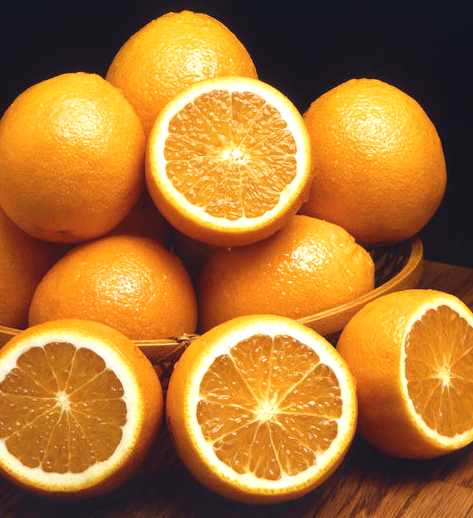
Long Beach, California is approximately 60 miles south of Santa Clarita and has one of the largest ports in the world.
The Port of Long Beach, also known as Long Beach’s Harbor Department, is the 2nd busiest container port in the United States. It adjoins the separate Port of Los Angeles. Acting as a major gateway for U.S.-Asian trade, the port occupies 3,200 acres (13 km2) of land with 25 miles (40 km) of waterfront in the city of Long Beach, California. The Port of Long Beach is located less than two miles (3 km) southwest of Downtown Long Beach and approximately 25 miles (40 km) south of downtown Los Angeles. The seaport boasts approximately $100 billion dollars in trade and provides more than 316,000 jobs in Southern California. Awarded with the Environmental Management Award in 2007, the Port of Long Beach strives to reduce pollution through environmentally progressive programs and initiatives.

http://en.wikipedia.org/wiki/Long_Beach,_California
Santa Clarita weather facts:
· August is the average warmest month.
· The highest recorded temperature was 113°F in 1971.
· The average coolest month is January.
· The lowest recorded temperature was 15°F in 1968.
· The maximum average precipitation occurs in February.

apps1.eere.energy.gov
AGRICULTURE:
Santa Clarita does not grow its own citrus trees. Approximately 45 miles north is Santa Paula, California which is dubbed the citrus capital of the world.
Santa Paula is a city within Ventura County, California, United States. The population was 28,598 at the 2000 census. It has been dubbed the "Citrus Capital of the World."
Santa Paula's economy is primarily agriculturally based, originally focusing on the growing of oranges and lemons. Recently, however, avocados have also been grown, and an avocado was added to the city's official seal (Calavo Growers, Inc. is headquartered here.) Santa Paula's mediterranean climate combined with an estimated 20 feet (6.1 m) of topsoil have made it one of the best locations for growing citrus.
http://en.wikipedia.org/wiki/Santa_Paula,_California

If you travel approximately 65 miles north you will reach Oxnard, California.
According to the Camarillo General Plan: "The areas studied showed a high percentage of Group I soils, primarily located on the relatively flat Oxnard Plain. The Oxnard Plain, because of these high-quality agricultural soils, coupled with a favorable climate, is considered one of the most fertile areas in the world."
Oxnard has been known for several different crops over the years, including: cucumbers,, sugar beets, lima beans, Stock (the cut flower), and strawberries. In the years of Oxnard's growth during the 70's and 80's, many farms and ranches were annexed for development, and many new development plans threatened much of the plain's farmland. In 1995, a grassroots effort known as SOAR (Save Open Space and Agricultural Resources) was initiated by farmers, ranchers and citizens of Ventura County in an effort to save the vast agricultural asset of the Oxnard Plain.
The Oxnard Plain is well-known for its strawberries. According to the USDA, Oxnard is California’s largest strawberry producer, supplying about one-third of the State's annual strawberry volume. From the end of September through the end of October, strawberries are planted and harvesting occurs from mid-December through mid-July in Oxnard. The peak harvesting season in California runs from April through June, when up to 10 million pint baskets of strawberries are shipped daily. The state of California supplies over 85 percent of U.S. strawberries, with the U.S. supplying for a quarter of total world production of strawberries.

Each year Oxnard hosts the California Strawberry Festival during the summer at Oxnard College, featuring vendors as well as food items based on the fruit such as strawberry nachos, strawberry pizza, strawberry funnel cake, strawberry sundaes, and strawberry champagne.
http://en.wikipedia.org/wiki/Oxnard,_CaliforniaSanta Clarita, California experiences earthquakes not hurricanes. The Northride Earthquake of 1994 impacted my life considerably in that I was not able to go to work due to collapsed freeways.
The Northridge earthquake occurred on January 17, 1994 at 4:31 AM Pacific Standard Time in Reseda, a neighborhood in the city of Los Angeles, California, lasting for about 45 seconds. This was a holiday Monday - Martin Luther King, Jr. Day. The earthquake had a "strong" moment magnitude of 6.7, but the ground acceleration was one of the highest ever instrumentally recorded in an urban area in North America. Seventy-two deaths were attributed to the earthquake, with over 9,000 injured. In addition, the earthquake caused an estimated $20 billion in damage, making it one of the costliest natural disasters in U.S. history.

http://en.wikipedia.org/wiki/1994_Northridge_earthquake
The City of Santa Clarita recognizes that Small Businesses greatly contribute to our economic vitality. We want your business to thrive for the well-being of you and your family, your employees and our community. In addition to opportunities to conduct business with the City, Santa Clarita offers a variety of additional resources from training programs to networking groups. This site offers some of the many resources available to you and your business.
http://econdev.santa-clarita.com/Index.aspx?page=5
No comments:
Post a Comment